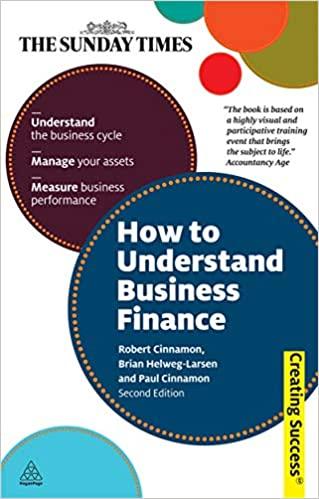Question
What is an appropriate required rate of return (hurdle rate) for Food Products and Instruments? How did you get it? (Hints: you may want to
What is an appropriate required rate of return (hurdle rate) for Food Products and Instruments? How did you get it? (Hints: you may want to use the capital asset pricing model (CAPM) to estimate the cost of equity)
Chestnut Foods Estimation of WACC for Chestnut Foods (year-end 2013) Chestnut Foods Hurdle Rate as of December 2013: 7.0% Chestnut uses a hurdle rate that reflects prevailing rates of return in financial markets using a weighted average of both debt and equity securities. The current mix of debt and equity in Chestnuts capital structure on a market-value basis is 20% debt and 80% equity. The prevailing yield on debt of similar credit risk is estimated at 3.5%. Based on a marginal corporate tax rate of 37%, the after-tax cost of debt is 2.2%. The cost of equity for Chestnut is estimated at 8.2% based on the CAPM with a beta of 0.9, a market risk premium of 6.0%, and a risk-free rate of 2.8%.* Based on these estimates, the WACC is 7.0%. * An alternative model that uses a market risk premium of 9% and a risk-free rate of 0.1% gives a similar cost-of-equity estimate. PLEASE CLARIFY HOW TO GET D/E RATIOS. `WACC Food Processing market risk premium 9% risk-free rate 0.1% debt ratio 60% equity ratio 40% tax rate 37% cost of debt 2.20% cost of equity 4.8% WACC 3.22%
Instruments market risk premium 9% risk-free rate 0.1% debt ratio 40% equity ratio 60% tax rate 37% cost of debt 2.20% cost of equity 9.4% WACC 6.52%
Step by Step Solution
There are 3 Steps involved in it
Step: 1

Get Instant Access to Expert-Tailored Solutions
See step-by-step solutions with expert insights and AI powered tools for academic success
Step: 2

Step: 3

Ace Your Homework with AI
Get the answers you need in no time with our AI-driven, step-by-step assistance
Get Started


